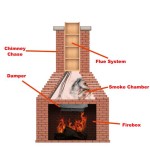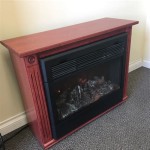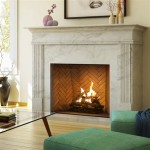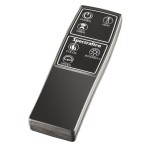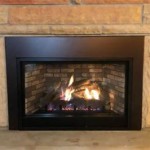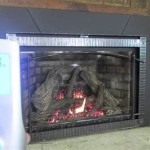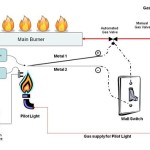The Allure of Electric Fireplace Built-Ins: A Comprehensive Guide
Electric fireplace built-ins have surged in popularity, offering a blend of aesthetics, convenience, and safety that traditional fireplaces often lack. These units are designed to be seamlessly integrated into a wall or custom-built surround, providing a focal point for a room without the complexities of venting, gas lines, or wood storage. This article explores the key aspects of electric fireplace built-ins, providing information to help homeowners make informed decisions about incorporating them into their living spaces.
Unlike their wood-burning or gas-powered counterparts, electric fireplaces operate by converting electricity into heat. This process is clean and efficient, eliminating concerns about smoke, soot, or hazardous emissions. Furthermore, many modern electric fireplaces offer realistic flame effects, often using LED technology to create a visually appealing and customizable ambiance. The combination of these advantages makes them an attractive option for a wide range of applications, from residential homes to commercial spaces.
One of the primary benefits of a built-in installation is the streamlined appearance it provides. By being recessed into a wall, the fireplace becomes an integral part of the room's design, contributing to a polished and sophisticated look. This integration is particularly appealing in contemporary or minimalist interiors where clean lines and uncluttered spaces are highly valued. The design flexibility offered by built-in electric fireplaces allows for customization in terms of size, shape, and surrounding materials, enabling homeowners to create a truly unique focal point.
Key Point 1: Advantages Over Traditional Fireplaces
Electric fireplace built-ins offer several distinct advantages when compared to traditional fireplaces. The most significant is the elimination of the need for venting. Traditional fireplaces require chimneys or exhaust systems to safely expel smoke and combustion byproducts. This requirement necessitates significant structural modifications to a building, often involving costly construction work. Electric fireplaces, on the other hand, simply require a standard electrical outlet, making installation significantly easier and less expensive.
Safety is another critical area where electric fireplaces excel. Traditional fireplaces pose risks of fire hazards, especially if not properly maintained. Embers can escape, and creosote buildup in chimneys can lead to dangerous chimney fires. Electric fireplaces eliminate these risks entirely, as there is no open flame or combustion involved. Many units also include features such as overheat protection and cool-touch glass, further enhancing safety, particularly in households with children or pets.
Convenience is also a significant factor. Traditional fireplaces require a constant supply of wood or gas, as well as ongoing maintenance such as cleaning the chimney and removing ashes. Electric fireplaces require minimal maintenance, typically just a periodic dusting. They are also extremely easy to operate, often controlled by a remote control or even a smartphone app, allowing users to adjust the flame intensity, heat output, and timer settings with ease.
Key Point 2: Installation Considerations and Design Possibilities
The installation of an electric fireplace built-in typically involves framing an opening in a wall or creating a custom surround using materials such as drywall, wood, or stone. It is crucial to ensure that the framing is properly constructed and that the electrical outlet is installed in accordance with local building codes. Many manufacturers provide detailed installation instructions and templates to facilitate the process. While some homeowners may choose to tackle the installation as a DIY project, professional installation is often recommended to ensure proper functionality and safety.
The design possibilities for built-in electric fireplaces are virtually limitless. The surround can be customized to match the room's decor, using materials that complement the existing color scheme and architectural style. Options range from sleek and modern designs with clean lines and minimalist details to more traditional styles with ornate moldings and decorative mantels. The surround can also incorporate features such as shelving, storage cabinets, or integrated lighting to enhance the overall aesthetic appeal and functionality of the space.
Another important design consideration is the placement of the fireplace within the room. It should be positioned in a location that maximizes its visual impact and creates a natural focal point. Factors to consider include the room's layout, the orientation of furniture, and the availability of natural light. In general, a centrally located fireplace will draw the eye and create a sense of balance and harmony within the space.
Key Point 3: Features and Technology
Modern electric fireplace built-ins incorporate a variety of advanced features and technologies that enhance their functionality and appeal. Realistic flame effects are a key feature, often utilizing LED lighting and holographic projections to create the illusion of a real fire. Many units offer adjustable flame colors, intensities, and speeds, allowing users to customize the ambiance to their liking.
Heating capabilities are another important feature to consider. Most electric fireplaces include a built-in heater that can provide supplemental heat to a room. The heating capacity is typically measured in BTUs (British Thermal Units), and the appropriate size of the heater will depend on the size of the room and the desired level of heating. Many units also include a thermostat that allows users to maintain a consistent room temperature.
Remote control operation is a standard feature, providing convenient control over the fireplace's various functions. Some units also offer smartphone app connectivity, allowing users to control the fireplace from their mobile devices. Additional features may include timers, sleep modes, and automatic shut-off functions, all designed to enhance convenience and energy efficiency. The advancements in technology continue to improve the realism and functionality of electric fireplace built-ins, making them an increasingly attractive option for homeowners seeking a stylish and convenient heating solution.

Aflamo Majestic 128cm Built In Electric Fireplace

Sparkling Series 65 Built In Wall Mount Electric Fireplace Huntington Fireplaces

ᑕ❶ᑐ How Much Do Fireplace Built Ins Cost Get The Guide

Diy Electric Fireplace With Built Ins The Dabbling Crafter

Custom Built In Entertainment Furniture And Cabinets With Electric Fireplaces

Aflamo Majestic 114cm Built In Electric Fireplace

Touchstone Sideline Elite 42 Recessed Smart Electric Fireplace 80042 Home S Inc

Glitzhome 60 In W Black Fan Forced Electric Fireplace Wm60 Built Shelves Living Room Home Wall

Built In Electric Fireplace Lolly Jane

Clihome 30 In Classic Built Or Wall Mounted Direct Vent Electric Fireplace Insert Cbl 30bk The Home Depot
Related Posts

